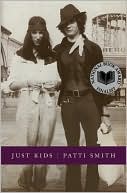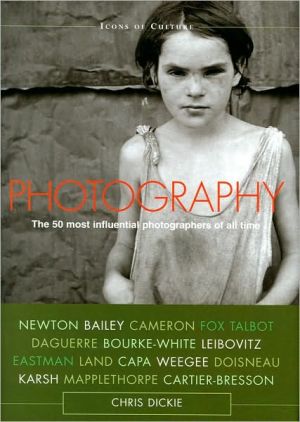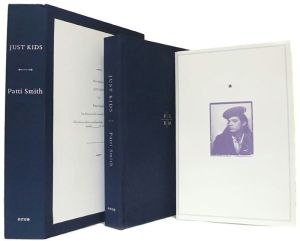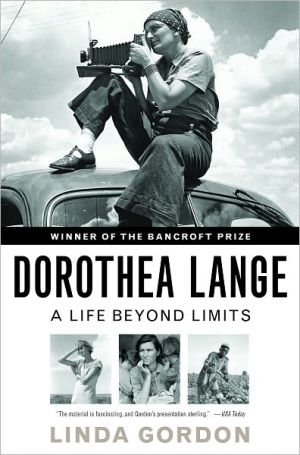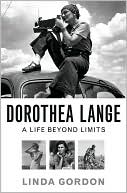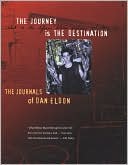Blood and Champagne: The Life and Times of Robert Capa
Robert Capa, one of the finest photojournalists and combat photographers of the twentieth century, covered every major conflict from the Spanish Civil War to the early conflict in Vietnam. Always close to the action, he created some of the most enduring images ever made with a camera--perhaps none more memorable than the gritty photos taken on the morning of D-Day.But the drama of Capa's life wasn't limited to one side of the lens. Born in Budapest as Andre Freidman, Capa fled political...
Search in google:
An evocative biography of the incomparable Robert Capa, the most famous photojournalist of the twentieth centuryThe New YorkerAndré Friedmann, a.k.a. Robert Capa, war photographer, bon vivant, and co-founder of Magnum, the legendary photo agency, remains the archetype of the committed photojournalist, risking his life to capture indelible images of the Spanish Civil War, Japan's invasion of China, Second World War battles in North Africa, Italy, France, and Germany, and Israel's war for independence. A Hungarian refugee who arrived in Paris in 1933, Capa transformed himself into a charming, caustic adventurer, a high-stakes gambler who left behind a heartbroken trail of beautiful women (including Ingrid Bergman). Kershaw is sympathetic, but by no means blind to his subject's technical, personal, and occasionally ethical limitations, and he conscientiously corrects the romantic embellishments that Capa made to his life story. No matter who tells it, there's a haunting inevitability to the story's end, when, in 1954, Capa finally runs out of luck -- at the age of forty, the first American correspondent to die in Indochina.
List of IllustrationsAcknowledgementsThree Thousand Miles From Omaha11Conversation in Budapest52Barbarians at the Gate153The Man Who Invented Himself224The Passionate War335'The Falling Soldier'386'La Paquena Rubena'487'The 400 Million'668The Final Defeat739Splendid Isolation8210Muddling Through9011The Desert9812It's a Tough War10713The Longest Day11614The Bocage13215Victory14416'Here's Looking At You, Kid'15817The End of the Affair16718Back in the USSR17719The New Look19220A Road of Death20121The Realm of the Senses21422How Can I Be Old?22523Forward Lies the Delta241Epilogue: The Legend252Notes256Bibliography277Index290
\ The New YorkerAndré Friedmann, a.k.a. Robert Capa, war photographer, bon vivant, and co-founder of Magnum, the legendary photo agency, remains the archetype of the committed photojournalist, risking his life to capture indelible images of the Spanish Civil War, Japan's invasion of China, Second World War battles in North Africa, Italy, France, and Germany, and Israel's war for independence. A Hungarian refugee who arrived in Paris in 1933, Capa transformed himself into a charming, caustic adventurer, a high-stakes gambler who left behind a heartbroken trail of beautiful women (including Ingrid Bergman). Kershaw is sympathetic, but by no means blind to his subject's technical, personal, and occasionally ethical limitations, and he conscientiously corrects the romantic embellishments that Capa made to his life story. No matter who tells it, there's a haunting inevitability to the story's end, when, in 1954, Capa finally runs out of luck -- at the age of forty, the first American correspondent to die in Indochina.\ \ \ \ \ Publishers WeeklyRobert Capa was the archetype of the intrepid war photographer. Asserting that "if your pictures aren't good enough, you're not close enough," Capa braved combat in the Spanish Civil War, hit Omaha Beach in the first wave on D-Day, and jumped behind German lines with American paratroopers, returning with visceral pictures-like the famous (and possibly staged) "falling soldier" photo of a Spanish Republican militiaman who had just been shot-that defined our idea of what modern war looks like. "Profligate, passionate, impulsive," Capa was a ladies' man who liked nice togs, hobnobbed with the rich and famous, got caught up in anti-Fascist and Popular Front politics, and played poker compulsively when he was not risking his life in combat-in other words, he practically invented the persona of the celebrity photojournalist. He also co-founded the pioneering Magnum photo agency, which gave freelance photographers ownership and control of their photos. Journalist Kershaw gives an engrossing account of Capa's impossibly romantic life, elegantly evoking both the horror of the front lines and the glamour of wartime Madrid, London and Paris, where Capa befriended the likes of Ernest Hemingway and romanced the likes of Ingrid Bergman. Packed with arresting anecdotes and character studies, Kershaw's biography is a worthy companion to Capa's work. Photos. (July) Copyright 2003 Reed Business Information.\ \ \ Library JournalAs the title of this fine biography suggests, Robert Capa's life represented a curious blend of danger and glamour. One of the most highly celebrated war photographers of the century, Capa (1914-54) pioneered the role of photojournalist in combat situations while inventing his own celebrity mystique. He enjoyed the company of Hollywood stars yet in his war assignments often placed himself in the greatest mortal danger; he died at the age of 41 while covering the early years of the Indochina conflict. In this largely chronological account, journalist Kershaw provides a balanced, meticulously researched portrayal that moves from Capa's early years in Hungary to his last days in Southeast Asia; the results are vivid and refreshing. John Steinbeck and John Hersey have each published tributes to Capa, and the photographer's work has been collected in any number of well-received books. However, along with Richard Whelan's Robert Capa: A Biography, this new book is one of the very few substantive biographies available. Recommended for all photography collections.-Raymond Bial, Parkland Coll. Lib., Champaign, IL Copyright 2003 Reed Business Information.\ \ \ \ \ Kirkus ReviewsFast-paced biography of the daredevil war photographer who died in combat at age 40. Kershaw (Jack London, 1998) relies heavily on Robert Capa’s 1947 memoir Slightly Out of Focus and the Richard Whelan’s 1985 biography, as well as other readily available sources. But he also conducted interviews with those who knew Capa, killed so young while photographing the French war in Vietnam during 1954. Born Andre Friedmann in 1913, part of a Hungarian Jewish family in modest circumstances, he left as a political refugee while still a teenager. He made it as far as Berlin, where he found a job as a darkroom assistant. Picking up a camera, the youngster became entranced with photography and quickly showed a talent for shooting original pictures. He broke through with stunning images of political rallies, then wound up with shooting assignments throughout Europe. He changed his name to Robert Capa because he thought it sounded punchy, memorable, and American. Faithfully following chronology, Kershaw relates how Capa achieved international fame during the Spanish Civil War with "The Falling Soldier," judiciously laying out the contradictory evidence as to whether the picture was authentic or staged. The author never loses sight of Capa's professional life, notable not only for the quality of the photographs but also the fearlessness he exhibited on battlefields around the world. Just as doggedly, Kershaw devotes substantial space to Capa’s high-profile womanizing (especially with the married Ingrid Bergman), gambling addiction, collaborations on word/picture books, and friendships with famous writers (especially John Steinbeck and Irwin Shaw), as well as the wanderlust that kept him from eversettling down. The analysis of Capa’s motivations is often insightful and rarely overbearing. A worthy introduction to an adventurous life. Agent: Lindsay Sterling\ \


